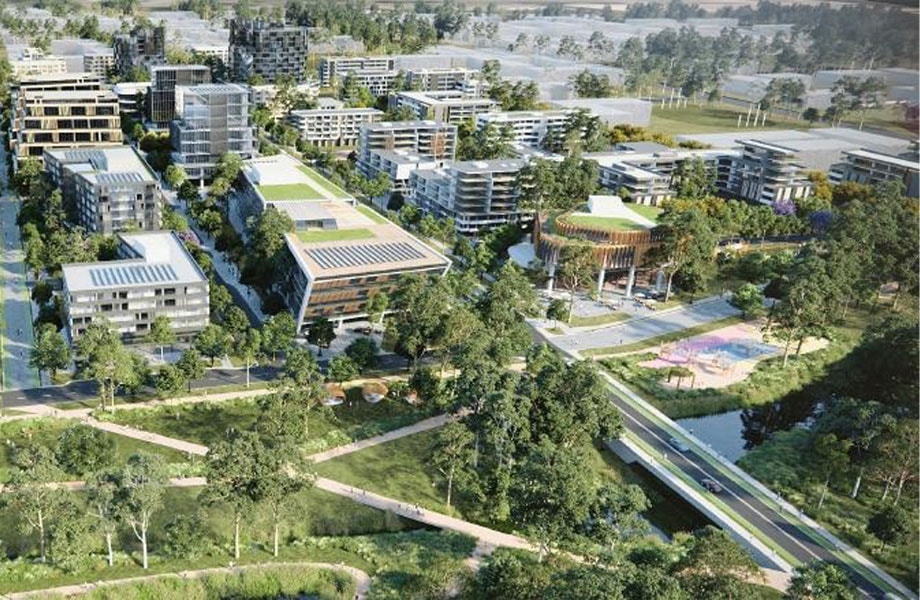Investing in commercial real estate has been a wealth creation staple for smart investors in Australia for years. As the property market changes commercial real estate offers opportunities for those looking to diversify their portfolio and make big money.
This guide will cover everything you need to know about commercial property investing in Australia.

What is Commercial Property Investment?
Commercial property investment is buying real estate for business use. This can include office buildings, retail spaces, industrial warehouses and more. Unlike residential property which is used for housing, commercial properties are leased to businesses and offer investors several benefits.
According to the Property Council of Australia the commercial property sector contributes over $200 billion to the Australian economy each year.
Why Invest in Commercial Property?
Higher Rental Yields
Commercial real estate generally produces higher rental income than residential properties. This means stronger cash flow and potentially higher returns. According to CoreLogic as of 2023 average gross rental yields for commercial properties in Australia are 5-8% compared to 3-4% for residential properties.
Longer Lease Terms
Commercial tenants sign longer leases, sometimes 5-10 years. This means investors have more stable and predictable income streams.
‘Net’ Leases
Many commercial leases in Australia are ‘net’ leases where tenants pay for property expenses such as taxes, insurance and maintenance. This can reduce ongoing costs for investors.
Capital Growth
Well located commercial properties in growing areas can increase in value over time and offer potential capital gains when sold. According to the Property Council of Australia commercial property has delivered 9% per annum over the last 30 years.
Diversification
Investing in commercial property can spread risk across different asset classes.

Types of Commercial Properties in Australia
-
Office Space: CBD high-rises in Sydney and Melbourne to suburban office parks in growing areas like Western Sydney or the Gold Coast.
-
Retail Property: Shopping centres, high street shops and large format retail centres in major cities and regional areas.
-
Industrial Property: Warehouses, distribution centres and manufacturing facilities in logistics hubs like Western Sydney and Melbourne’s west.
-
Social Infrastructure: Healthcare facilities, educational institutions and government buildings across Australia.
-
Specialised Properties: Hotels, leisure facilities and data centres are examples of more niche commercial property investments in Australia.
How to Get Started in Commercial Property Investing
Before you start commercial property investing you need to do your research and understand the commercial property market in Australia.
Here are the steps to consider:
What are Your Investment Goals?
Do you want regular income, capital growth or a bit of both? Your goals will dictate your strategy.
What is Your Risk Tolerance?
Commercial property investing can offer higher returns but more risk than residential property.
What’s Your Budget?
Commercial properties require larger upfront investments than residential properties. Don’t just consider the purchase price but also any renovations or upgrades. In major Australian cities entry level commercial properties can start from around $700,000 to $1 million.
Choose Wisely
The old adage ‘location, location, location’ applies just as much to commercial property as it does to residential. Look for areas with strong economic fundamentals and growth potential. For example areas with major infrastructure projects like Western Sydney Airport or Brisbane’s Cross River Rail can be opportunities.
Know the Leasing Market
Research the demand for commercial space and typical lease terms in your area. The Property Council of Australia and commercial real estate firms publish market reports that can be useful.
Get Professional Help
Talk to our team here at Smart Business Plans about your commercial real estate goals – we can help you build a cash flow model and get the best business finance in place for you to make the process much easier. You’ll also want to talk to a solicitor so you have the legal side of things covered (we can assist with this to if you don’t have someone already). Ensure you check the credentials and experience of the professionals you engage.

How to Fund Your Commercial Property Investment
If you’re looking to acquire your own commercial property and need finance to do so, the best thing to do is call us on 1300 262 098, or book a call with us below. We’ve helped more than 3,300 Australian business owners with business finance, business plans and cash flow forecasting.
Over the phone we’ll run through our checklist and let you know if we think we can help you get the best finance rates and terms from our marketplace of more than 60 lenders. We’ll also walk you through what’s needed on your side – from deposit amounts to the paperwork.
Doing Your Due Diligence: What to Look Out For
When assessing a commercial property investment in Australia consider:
-
Tenant Quality: The financial stability and reputation of existing tenants is key to your investment success. In Australia consider the industry sector of your tenants and how it aligns with economic trends.
-
Lease Terms: Review the length of leases, break clauses and rent review periods. Australian commercial leases often have annual rent increases linked to the Consumer Price Index (CPI).
-
Building Condition: A structural survey will help identify any potential defects that could lead to costly repairs. In Australia consider energy efficiency ratings as these are becoming increasingly important to tenants and affect property values.
-
Planning Restrictions: Understand any restrictions on the use or redevelopment of the property. Each state and territory in Australia has its own planning laws so it’s important to know the local rules.
-
Environmental Factors: Be aware of any environmental risks or liabilities associated with the property. This is especially relevant in Australia where bushfire risk, flood zones and coastal erosion can impact property values.
-
Market Trends: Think about how changes in the local economy, technology or work practices will impact demand for the property in the future. For example the growth of e-commerce is driving demand for industrial properties in Australia while changing work practices are reshaping the office sector.

Managing Your Commercial Property
Once you have a commercial property you need to manage it effectively to maximise returns and minimise risk. This includes:
-
Maintaining the Property: Regular maintenance will help retain tenants and preserve the value of the property. In Australia stay on top of building compliance requirements which vary by state and territory.
-
Managing Tenant Relationships: Good communication with tenants will lead to higher retention rates and smoother operations. Knowing the Australian business culture and local market conditions will help you build strong relationships with tenants.
-
Staying Compliant: Ensure the property meets all relevant health and safety regulations and other legal requirements. This includes the Building Code of Australia and state specific regulations.
-
Reviewing Rents: Regular rent reviews in line with market conditions and lease terms will help keep returns competitive. In Australia annual rent increases are common in commercial leases.
-
Future Proofing: Think about upgrading or redeveloping the property to increase its value over time. This might include improving energy efficiency to meet the growing demand for sustainable buildings in Australia.
Risks and Challenges in Commercial Property Investing
While commercial property can be attractive, be aware of the risks in Australia:
-
Economic Sensitivity: Commercial property performance is often linked to the overall economy. Australia’s economy is influenced by commodity prices and international trade relationships which impact different commercial property sectors.
-
Illiquidity: Commercial properties take longer to sell than residential properties and can tie up capital. This is especially challenging in less active markets outside of major Australian cities.
-
Higher Upfront Costs: Purchase prices and ongoing management costs are higher for commercial properties. In Australia stamp duty on commercial property purchases can be high and varies by state and property value.
-
Vacancy Risks: Long periods of vacancy can impact returns. Different Australian cities and property sectors have different vacancy rates so know the local market.
-
Regulatory Changes: Changes to planning laws, tax regulations or environmental standards can impact property values and returns. For example changes to foreign investment rules or superannuation regulations can impact the commercial property market in Australia.
The Future of Commercial Property Investing in Australia

The commercial real estate sector in Australia is changing, driven by:
-
Changing Work Practices: The rise of remote working and flexible office spaces is changing demand for traditional office space. According to a 2022 report by the Property Council of Australia there is growing demand for high quality, well located office spaces that support collaboration and employee wellbeing.
-
E-commerce Growth: While challenging for some retail properties, this trend is driving demand for logistics and distribution centres. The National Australia Bank’s Online Retail Sales Index shows online shopping is growing consistently and that’s driving demand for industrial properties.
-
Sustainability Focus: The focus on energy efficiency and sustainable building practices is impacting property values and tenant preferences. The Green Building Council of Australia reports Green Star rated buildings get a 5% rent premium and lower vacancy rates.
-
Technology Integration: Smart building technologies are becoming key to attracting and retaining tenants. This includes features like touchless entry systems, advanced air filtration and integrated building management systems.
-
Demographic Shifts: Changing population patterns and lifestyle preferences are driving demand for different types of commercial spaces. For example the ageing population is driving demand for healthcare related properties.
-
Infrastructure Development: Major infrastructure projects across Australia, such as the Melbourne Metro Tunnel, Western Sydney Airport and Brisbane’s Cross River Rail are creating new commercial property hotspots.
-
Foreign Investment: Despite some regulatory changes Australia is still attracting significant foreign investment in commercial property. The Foreign Investment Review Board’s Annual Report provides more information on these trends and their impact on the market.
Case Study: Western Sydney Aerotropolis

The development of Western Sydney Airport and the surrounding Aerotropolis is a great example of the future of commercial property investing in Australia. This major infrastructure project will create opportunities across various commercial property sectors:
-
Industrial and Logistics: The airport will drive demand for warehousing and distribution facilities in the area.
-
Office Space: The Aerotropolis will have a commercial core with businesses in sectors like aerospace and defence, manufacturing, healthcare and education.
-
Retail: New residential developments in the area will drive demand for retail spaces, from local shopping centres to large format retail.
-
Specialised Facilities: There may be opportunities for special purpose properties like hotels, conference centres and research facilities.
Investors should consider the long term nature of the development (the airport will open in 2026 with surrounding development continuing for decades), property value changes as the project progresses and local planning regulations.
Tax for Commercial Property Investors in Australia
Understanding the tax implications of commercial property investment is key to getting the best returns. Here are some things to consider:
-
Capital Gains Tax (CGT): When you sell a commercial property you may be liable for CGT on the capital gain. However if you’ve held the property for more than 12 months you may be eligible for a 50% CGT discount (for individuals and trusts not companies).
-
Negative Gearing: If the expenses of owning your commercial property (including interest on loans) are greater than the rental income you may be able to offset those losses against other income and reduce your overall tax bill.
-
Depreciation: You can claim depreciation on the building structure (capital works deductions) and on fixtures and fittings within the property (plant and equipment deductions). A quantity surveyor can provide a depreciation schedule to get the most out of these deductions.
-
Goods and Services Tax (GST): Unlike residential property commercial property transactions are generally GST applicable. However in many cases you can claim back the GST paid on purchases and expenses related to the property.
-
Land Tax: This is payable annually on the unimproved value of your land holdings above a certain threshold which varies by state. Commercial properties are not exempt from land tax like owner occupied residential properties.
-
Self-Managed Super Fund (SMSF) Considerations: If purchasing through an SMSF be aware of the specific rules and restrictions, such as the property needs to be leased at market rates and not used by fund members or related parties.
Always consult with a qualified tax professional to get advice on how this applies to your situation.

Emerging Trends in Australian Commercial Property
Looking forward there are several trends shaping the commercial property market in Australia:
-
Build-to-Rent: While more common in residential property the build-to-rent model is gaining momentum in commercial property particularly for mixed use developments.
-
Adaptive Reuse: Repurposing existing buildings for new uses is on the rise driven by sustainability and changing market demand. For example old office buildings being converted into residential or mixed use spaces.
-
Data Centres: With the growing importance of digital infrastructure data centres are becoming a major commercial property sub-sector.
-
Life Sciences and Healthcare: The COVID-19 pandemic has shown us the importance of these sectors and is driving demand for special purpose facilities like research labs and medical offices.
-
Last-Mile Logistics: The growth of e-commerce is driving demand for smaller warehouses and distribution centres near urban areas.
-
ESG Focus: Environmental, Social and Governance (ESG) is becoming more important to tenants, investors and regulators. Properties with strong ESG will command premium rents and values.
So, should I do it?
Commercial property investing offers many opportunities for Australian investors to diversify their portfolio and get strong returns. But success in this sector requires research, due diligence and ongoing management. By understanding commercial property investment and staying up to date with market trends investors can make informed decisions and navigate this asset class.
Australia has many commercial property opportunities from the CBDs of Sydney and Melbourne to emerging areas like Western Sydney and South East Queensland. With its solid economic fundamentals, robust legal system and ongoing infrastructure development Australia is a great place to invest in commercial property.
Remember commercial property can be a good addition to your investment strategy but always seek professional advice and consider how it fits into your overall financial goals. With the right approach and knowledge commercial property investing can be a great journey for Australian investors looking to build wealth over the long term.
When investing in commercial property stay up to date with market trends, be flexible and do your due diligence. Whether you’re buying your first commercial property or expanding your existing portfolio the Australian market has many options for those who are willing to put in the work.
If you’d like help with commercial finance to acquire a commercial property, book at call with us and we’ll walk you through the process.

